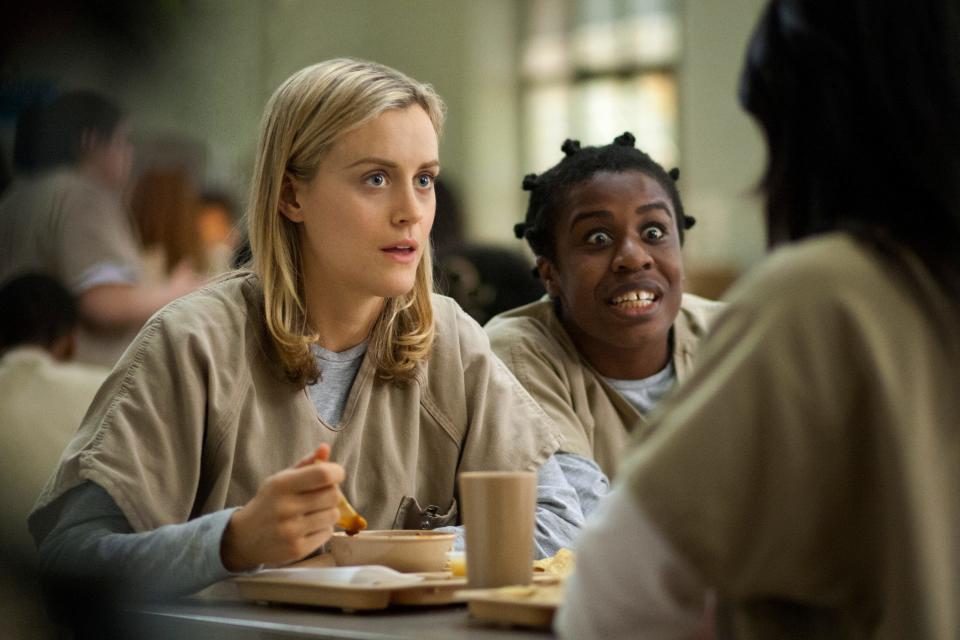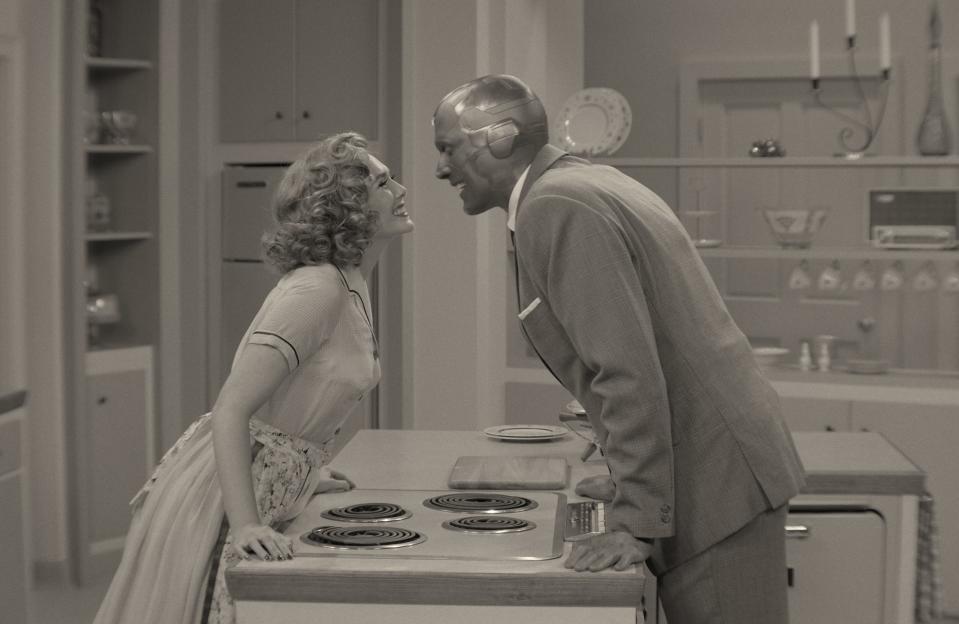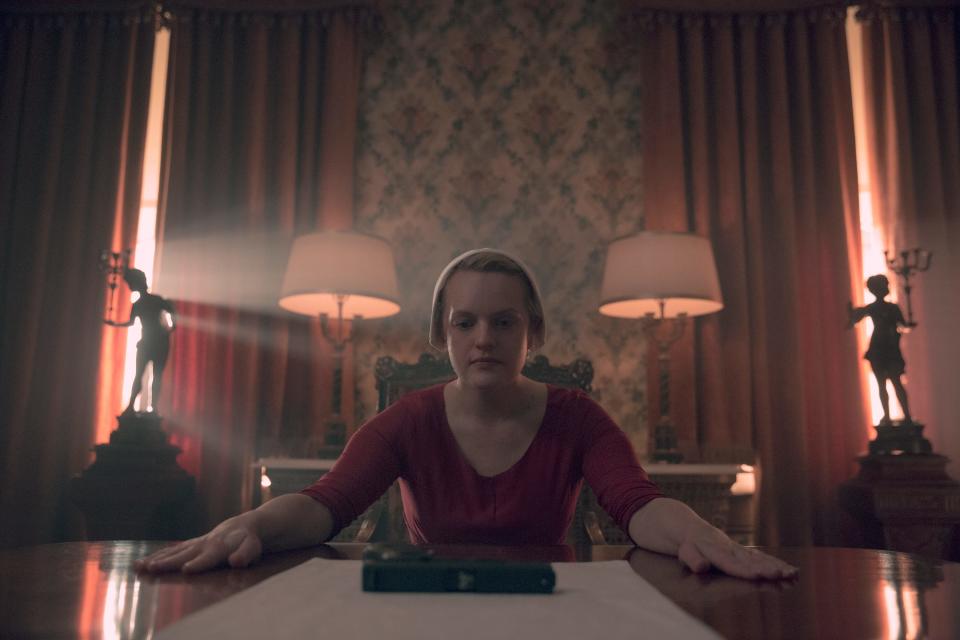To binge or not to binge? Why it's a good thing Netflix, Disney+ are releasing some shows weekly
There's a weird thing happening on television: It's starting to look more like TV again.
In 2021 there are more streaming services than ice cream flavors, the COVID-19 pandemic has disrupted production schedules and brought masks onscreen and broadcast TV ratings are a shadow of their former selves. But amid a period of radical change for the medium that is no longer tied to actual televisions, a few old tricks are coming into play in surprising ways.
Netflix premiered the second season of the reality series "The Circle" on April 14, but instead of following the streamer's usual pattern of making all episodes available at once, "Circle" will make its way to viewers in four-episode weekly batches. "It's nice to anticipate something, to sit and wait for it," the show's host Michelle Buteau told USA TODAY. "I don't feel like we do that anymore."

Episodes have been airing weekly on broadcast and cable TV for decades. But something feels novel about Netflix – the industry disruptor that gave the word "binge" a positive connotation – holding back from the full-season dump. And Netflix isn't alone. Disney+ ("The Mandalorian"), HBO Max ("The Flight Attendant"), Hulu ("The Handmaid's Tale") and Amazon Prime ("The Expanse") are experimenting with how and when they release their shows. While the change might force adjustments in binge viewers' weekend plans, the real question is which release method makes for better TV storytelling? And often more important for the corporations behind the series, which leads to more subscribers and viewers?
The answer depends on the series. For dense and complex mysteries, some genre fare, addictive romance and many miniseries, releasing all episodes at once makes the most sense, creatively and for generating buzz to bring eyeballs to the series. But for others – including outrageous reality TV, long comedies, formulaic procedural series and slower-burn dramas – weekly releases can build word of mouth and enhance the viewing experience, even hiding flaws.
And in a world where technology lets streaming services do pretty much whatever they want with their content, there is no reason they shouldn't continue curating each release schedule to the series.

When Netflix released the first season of "House of Cards" in 2013 all at once, it was a game changer in how TV was distributed, a bellwether for the changes that would rock the industry as streaming became a dominant form of TV-watching.
And for many series, binge-watching was both a commercially and creatively successful way for viewers to enjoy the stories. Twisty thrillers like "Cards," character dramas like "Orange Is the New Black" (2013) and true crime docuseries like "Making a Murderer" (2015) all benefited from audiences who devoured every episode in a single weekend. The buzz for binge series is front-loaded, but for big titles, it can be quite loud, and many feel the peer pressure-induced race to finish the episodes before the outcome is spoiled. Last December, Netflix released the first season of Shonda Rhimes' "Bridgerton" – which the company calls its biggest show ever – all at once, and the obsession with the show lasted long after its Christmas premiere.
►2021 TV premiere dates: Your favorite shows, new addictions
But even at the beginning, full-season releases didn't always work, especially for comedy series. A much-ballyhooed fourth season of "Arrested Development," which also debuted in 2013, was a slog when watched all at once. Although no one was forced to watch it in one go, many did. Consuming its timeline-jumping episodes one after another only highlighted the season's many script problems.
Eight years and many more original series later, Netflix is mixing things up again. Like "The Circle," "Love Is Blind" offered episodes in batches last year and the upcoming second season of "Too Hot to Handle" will follow suit in June. Some imported series, such as the popular "Great British Baking Show," have featured new episodes weekly to honor licensing agreements. For shock-and-awe-based series that hope to build viewership over time, weekly or batch delivery of episodes helps to generate word of mouth on social media. The absurd "Blind" premise, in which couples who have never seen each other get engaged, had to be seen to be believed, as did the question of whether or not they really walked down the aisle.
Perhaps no streamer has more fully embraced weekly episodes than Disney+. Although much of the content on the family-friendly streamer is released in season-long increments, the service's highest-profile series, including "The Mandalorian" and Marvel shows "WandaVision" and "The Falcon and the Winter Soldier," which aired its series finale Friday, are available one episode at a time, once a week. "Loki," premiering June 19 and starring Tom Hiddleston, will have the same release pattern.
The lure of titles from these big franchises is enough to keep fans coming back, and the three shows have sustained the online conversation for the duration of their runs. (But dropping these episodes at 3 a.m. EDT is a mistake that risks spoiling fans who didn't get up in the middle of the night to watch.)

For standard action fare like "Mandalorian" and "Falcon," weekly episodes were clearly the correct way to go. Viewed all at once, each episode of "Mandalorian" starts to look the same. "Falcon" has pacing problems that are mitigated by the long breaks between episodes, helping to sustain the illusion that the slowness is due to the actual passage of time rather than poor structure. And neither series has a tantalizing hook, mystery, or flair for cliffhangers that might keep a binge-watching viewer clicking "next episode."
But for "WandaVision," weekly releases hampered the actual storytelling. Although the mystery box of a series was based in part on the traditional broadcast sitcom structure, splitting up a dense, complex miniseries didn't make for the best viewing experience, even if it generated plenty of online conversation. Although Disney+ offered two episodes on launch day, it takes four to really understand what "WandaVision" is about, potentially alienating viewers confused by the first few episodes that don't explain who its main characters are, let alone what they're doing in a black-and-white sitcom world. Structured far more like a three-act film than a nine-episode TV season, "WandaVision" would have been a more enjoyable show viewed all at once.

And it's not as though Netflix and Disney+ are pioneers. Look at Hulu, which for years has employed three-episode premiere days followed by weekly drops for some of its biggest shows, including "The Handmaid's Tale." Although "Handmaid's" doesn't command social media attention the way the Marvel shows do, the series has become a pop culture institution, with plenty of Emmys and political protesters sporting its costumes.
As the streaming landscape continues to grow and change, other series might benefit from a scheduling shakeup. Why not release "Stranger Things," which has more mysteries and twists than the Marvel series combined, in weekly installments to sustain the series' buzz longer? Why not give the upcoming "Star Wars" shows a chance at a binge?
Binge-watching is not a one-size-fits-all proposition, and clearly, none of the streamers is approaching it that way. One of the best things about TV is that there is so much opportunity to experiment. Hollywood is marching unstoppably toward a streaming future for entertainment, so why not take advantage of all the perks that afford?
►More: 'The Circle': Social experiment reality series returns to Netflix, and 'competition is next-level'
Contributing: David Oliver
This article originally appeared on USA TODAY: 'The Circle' to 'Falcon': Why it's good streamers are going weekly

 Yahoo Finance
Yahoo Finance